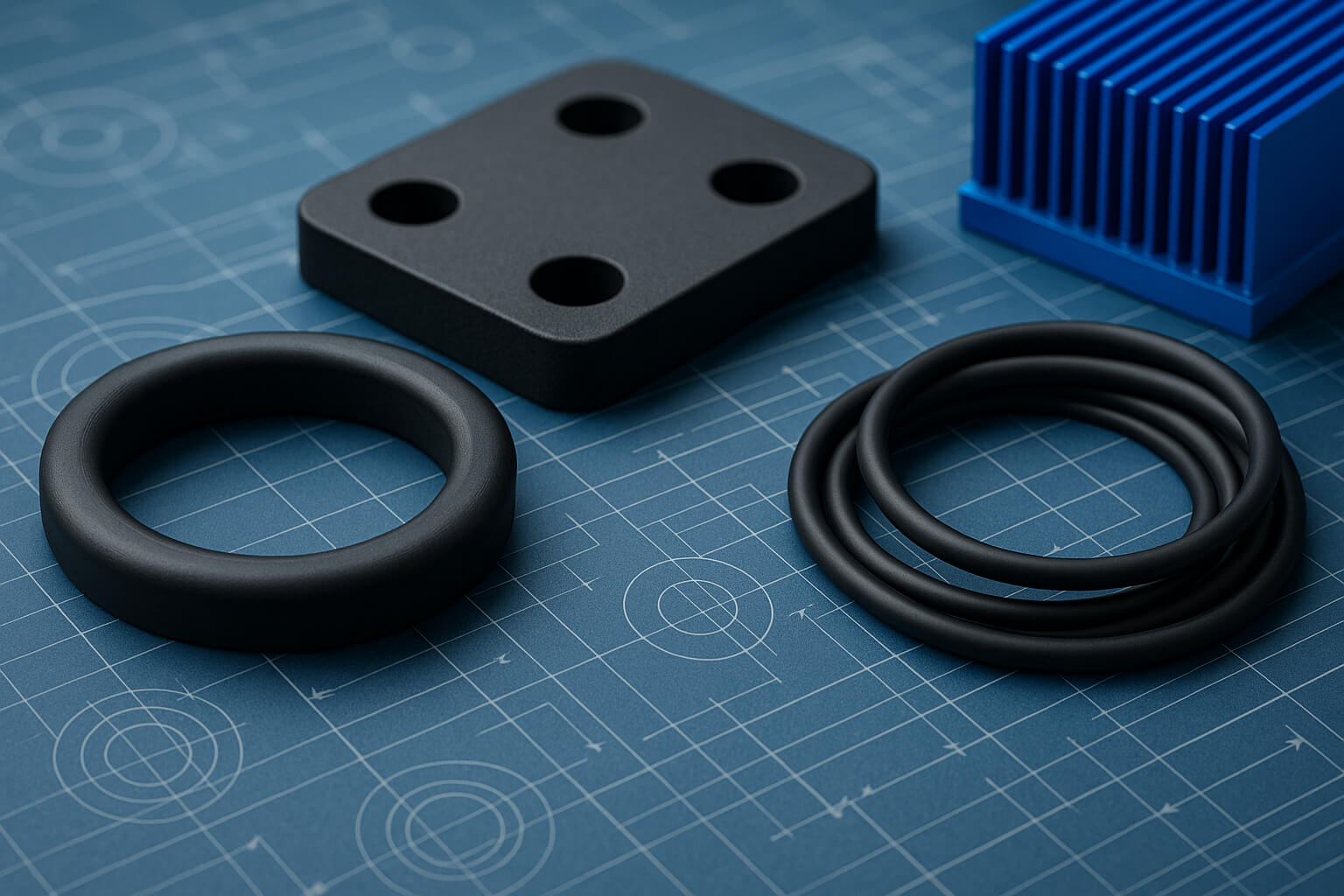
When manufacturing medical devices, consistent performance and patient safety are paramount considerations. Electromagnetic interference (EMI) can compromise both, disrupting device functionality and accuracy. To safeguard medical technology, electromagnetic shielding materials provide essential protection against interference.
This guide outlines the critical qualities of shielding materials, common options, and tips for selecting the best solutions tailored for medical applications.
What is Electromagnetic Shielding in Medical Devices?
Electromagnetic shielding involves using conductive or magnetic materials to protect sensitive medical equipment from electromagnetic frequencies (EMF) that can negatively impact performance. EMFs from external sources, such as other medical devices or environmental interference, can impair device accuracy, reliability, and signal integrity.
Types of EMI Shielding Materials for Medical Applications
Shielding materials used in medical devices fall into two primary categories:
- Conductive Materials: Redirect EMI away from critical components to reduce internal interference, ensuring accurate readings and signals.
- Blocking Materials: Prevent external EMI from penetrating device enclosures, safeguarding sensitive electronics.
Common Shielding Materials for Medical Devices
Fabric-Covered Foam
- Constructed from nylon or polyester with embedded conductive threads (e.g., copper or silver).
- Blocks EMFs due to its tightly woven structure.
- Resistant to environmental factors such as moisture and temperature fluctuations.
Oriented Wire
- A highly conductive material that creates electrical pathways to channel and reduce EMI.
- Commonly used for internal shielding and electrical grounding in devices like imaging equipment and monitors.
Metals: Steel, Copper, Aluminum
- Widely utilized for shielding device housings, cables, and connectors.
- Aluminum is particularly valued for its lightweight and corrosion-resistant properties, making it ideal for portable medical devices.
Filled Silicone
- Silicone infused with metallic particles for enhanced conductivity.
- Often used in seals and gaskets, providing both EMI shielding and environmental sealing.
Choosing the Right Shielding Material for Medical Devices
Selecting the most appropriate shielding material involves assessing the specific requirements of the medical application. Key considerations include:
Resistance to EMFs
- High-resistance materials, such as fabric-covered foam and metals, are ideal for blocking external interference in devices like pacemakers or infusion pumps.
- Conductive materials like oriented wire better mitigate internal interference in multi-component systems.
Conductivity and Compatibility
- Highly conductive materials efficiently redirect EMI but may allow some penetration. Choose low-conductivity materials for blocking purposes.
- Ensure compatibility with the medical device’s electrical and mechanical systems.
Biocompatibility and Environmental Durability
- Shielding materials must comply with medical-grade standards and be biocompatible for patient-facing applications.
- Resistance to sterilization processes, heat, moisture, and corrosion is essential for longevity and reliability.
Cost and Availability
- Advanced shielding materials, such as filled silicones or customized metals, may come at a higher cost—balance budget considerations with the need for uncompromised device performance.
- Plan for lead times if specialized materials or configurations are required.
Application Insights for Medical Devices
- External Interference Shielding: Materials like fabric-covered foam or metals are ideal for devices requiring robust EMI protection, such as MRI machines, EKG monitors, and diagnostic equipment.
- Internal Component Shielding: Conductive materials, such as oriented wire or filled silicone, effectively disperse internal interference in complex systems like ventilators or imaging devices.
Sur-Seal Solutions for Medical Device Shielding
Sur-Seal provides industry-leading EMI shielding solutions tailored to the unique demands of the medical field. Our materials ensure optimal performance and compliance with healthcare standards, delivering precision and reliability in critical applications.
Key Benefits:
- Customizable designs for diverse medical technologies.
- Proven resistance to EMI, sterilization processes, and environmental stressors.
- Scalable solutions for both prototype and high-volume production.
Sur-Seal proudly holds the ISO-13485 certification for medical devices and has medical Cleanroom and White Room capabilities to best serve our healthcare customers.
Partner with Sur-Seal for Medical EMI Shielding
Safeguard your medical devices with Sur-Seal’s advanced EMI shielding materials. Explore our product lines, including Sur-Sil conductive silicones and Sur-Flex foam shields. Contact us today to learn more about our tailored solutions for ensuring performance and safety in healthcare technologies.

